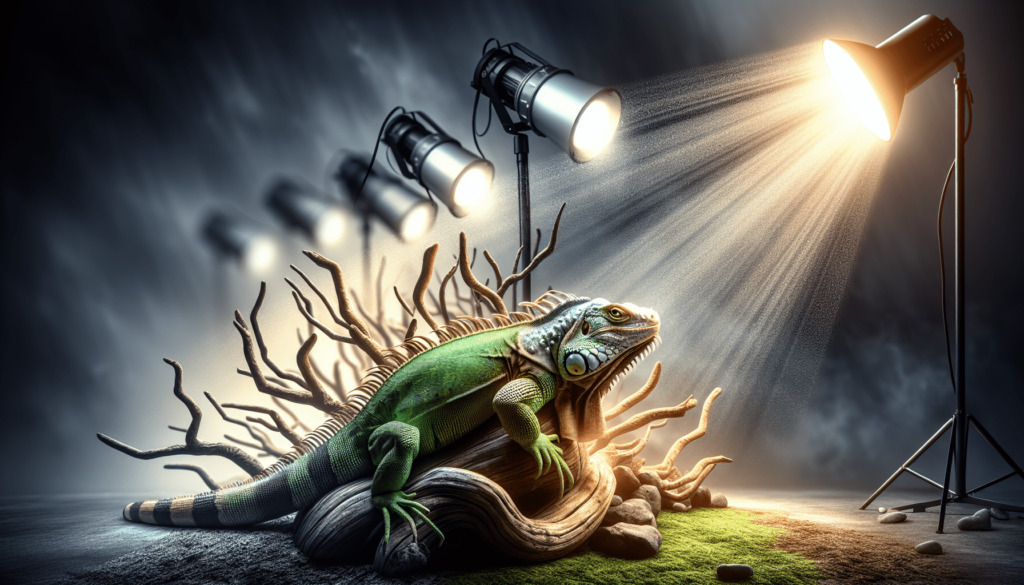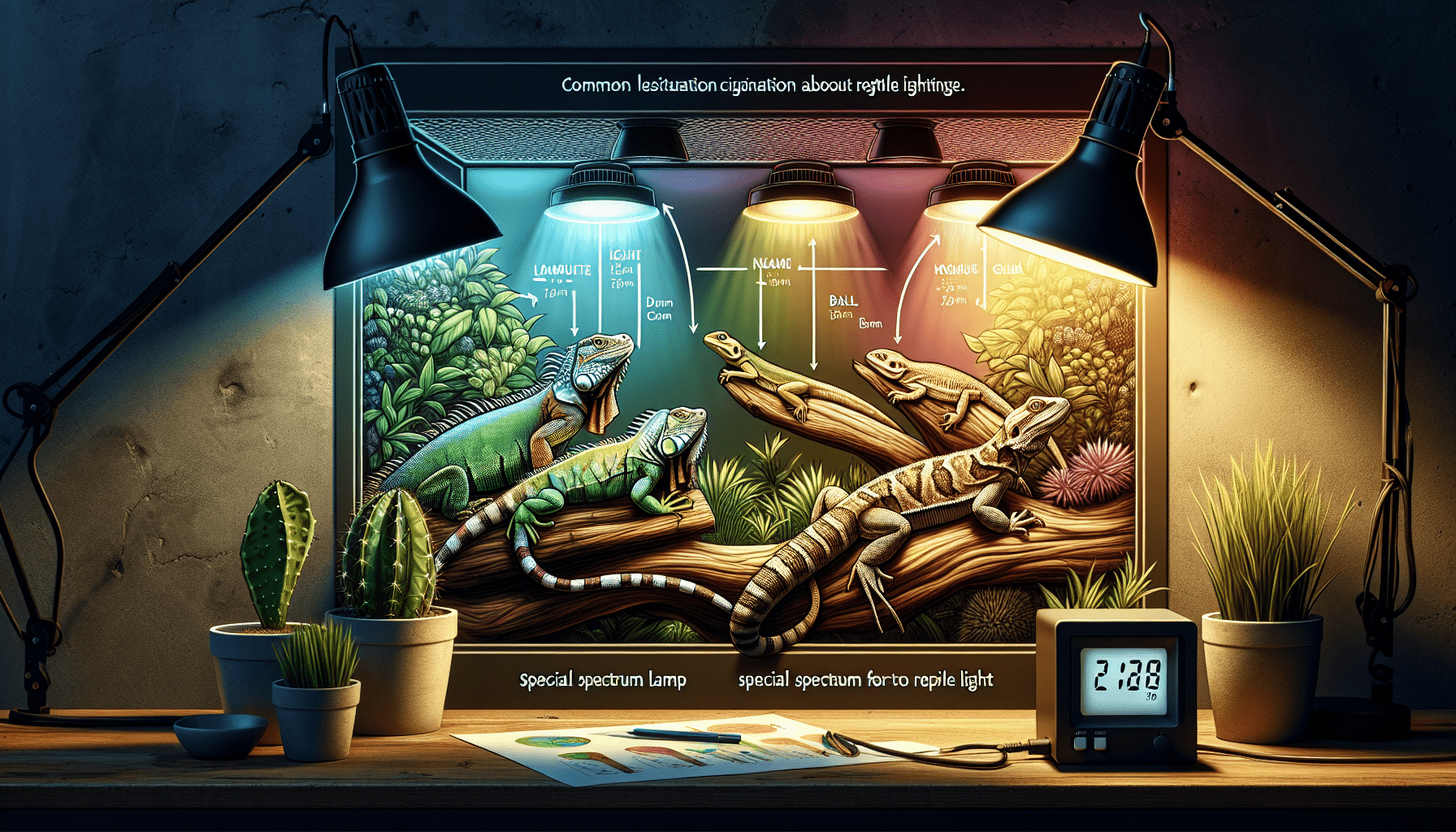
How Long Do You Leave Reptile Lights On?
When it comes to taking care of reptiles, providing them with the right amount of light is crucial. But have you ever wondered how long you should actually leave those reptile lights on? Whether you’re a seasoned reptile owner or a curious beginner, understanding the ideal duration for keeping the lights on is essential for the well-being of your scaly friends. In this article, we will explore the factors to consider and provide some insights to help you determine the perfect timing for your reptile’s lighting needs. So, let’s shed some light on the question, “how long do you leave reptile lights on?”

Types of Reptile Lights
When it comes to providing the best care for your reptiles, choosing the right lighting is crucial. Reptile lights serve different purposes and cater to the specific needs of your scaly friends. Before diving into the specific types of lights available, it’s important to understand the factors to consider when selecting lighting for your reptiles.
Factors to Consider
Before you decide on the type of lights to use, there are a few key factors to keep in mind that will help ensure you provide the best lighting setup for your reptile.
1. Type of Reptile
Different reptile species have varying lighting requirements. Some reptiles, like desert-dwelling lizards, require intense heat and UVB light exposure, while others, such as nocturnal species, may have different lighting needs altogether. Understanding the natural habitat and behavior of your reptile species will help you make an informed decision about the type of lights to use.
2. Natural Habitat
Reptiles are naturally equipped to thrive in specific habitats. It’s important to replicate their natural environment as closely as possible, including lighting conditions. Take note of the temperature, humidity, and light intensity of their natural habitat. This information will guide you in creating the ideal lighting setup for your reptile.
3. Behavioral Patterns
The behavior of your reptile plays a crucial role in determining the appropriate lighting. Some reptiles require basking areas to regulate their body temperature, while others thrive in low-light conditions. Understanding the behavioral patterns of your reptile will help you provide the right lighting environment to promote their overall well-being.
Now that we understand the factors to consider when choosing reptile lights, let’s explore the specific types of lights commonly used in reptile enclosures.
UVB Lights
UVB lights are essential for reptiles as they provide the necessary UVB radiation that aids in the synthesis of vitamin D3, which is crucial for calcium metabolism. This is particularly important for reptiles that require high levels of UVB exposure, such as desert-dwelling lizards.
Importance of UVB Light
UVB light is crucial for reptiles as it helps prevent metabolic bone disease, which is a common health issue in reptiles due to calcium deficiencies. Metabolic bone disease can lead to weakened bones, deformities, and even death. By providing adequate UVB light, you ensure that your reptile can properly absorb and utilize calcium, promoting healthy bone development.
Recommended Duration
The duration of UVB exposure will vary depending on the specific needs of your reptile species. As a general rule of thumb, reptiles typically require 10-12 hours of UVB exposure per day. However, it’s important to research your reptile species to determine their specific UVB requirements.
Distance from Reptile
UVB lights should be placed at an appropriate distance from your reptile to ensure optimal exposure. The distance will depend on the strength of the UVB bulb being used, so it’s essential to follow the manufacturer’s guidelines. Typically, UVB bulbs should be positioned within 12-18 inches of your reptile to provide sufficient UVB radiation without causing harm.
Replacing UVB Bulbs
UVB bulbs have a limited lifespan and their effectiveness decreases over time. It’s important to regularly replace UVB bulbs every 6-12 months, even if they are still emitting light. This ensures that your reptile is receiving adequate levels of UVB radiation for their health and well-being.
Basking Lights
Basking lights serve the purpose of providing a localized heat source for reptiles. Reptiles often need to regulate their body temperature by moving between areas of different temperatures, with basking spots being warmer areas.
Heat Requirement
Different reptile species have varying heat requirements. It’s essential to research the specific temperature needs of your reptile to provide the appropriate level of heat. Basking lights can be used to create a warm spot within the enclosure where your reptile can adequately warm themselves.
Duration for Basking Lights
The duration of basking lights will depend on the species of your reptile and their natural behavior. Some reptiles may require several hours of basking time per day, while others may only need a short period. Observing your reptile’s behavior and monitoring their body temperature will help you determine the appropriate duration for basking lights.
Positioning the Basking Light
Positioning the basking light correctly is crucial to provide your reptile with the necessary heat. The light should be placed in such a way that it reaches the basking area and provides a warm spot for your reptile to regulate its body temperature. Placing the light at an appropriate distance and angle will ensure that your reptile receives the desired heat.

Infrared Lights
Infrared lights are beneficial for reptiles that require additional nighttime lighting or for monitoring their behavior without disturbing their natural sleep patterns.
Uses of Infrared Lights
Infrared lights serve multiple purposes for reptiles. They provide a low-intensity light source for nocturnal species that may require some form of lighting during the night. Additionally, infrared lights can be used by reptile owners to observe their reptile’s behavior during the night without interrupting their sleep.
Duration for Infrared Lights
The duration for infrared lights will mainly depend on the specific needs of your reptile. Nocturnal reptiles may require infrared lights to be left on throughout the night, while others may not require any additional nighttime lighting. Do thorough research on your reptile species to determine their specific requirements.
Nighttime Lighting
Reptiles need a period of darkness during the night to maintain their natural circadian rhythm. The use of low-intensity infrared lights can provide some illumination without disturbing their sleep patterns. Ensuring an appropriate dark period is crucial for the overall well-being of your reptile.
Dusk and Dawn Simulation
Dusk and dawn simulation lighting can mimic the natural lighting changes that occur during sunrise and sunset. This can provide additional enrichment for your reptile’s enclosure.
Benefits of Simulating Dusk and Dawn
Simulating dusk and dawn lighting in your reptile’s enclosure can help replicate their natural environment and provide a sense of routine. This can have a calming effect on your reptile and contribute to their overall well-being.
Duration for Dusk and Dawn Lights
The duration for dusk and dawn lights will vary depending on your reptile species and their natural habitat. A gradual transition between day and night can be achieved by programming the lights to gradually dim and brighten over a certain period of time. Simulating the natural lighting changes will help create a more natural and comfortable environment for your reptile.
Automatic Light Timers
Using automatic light timers can simplify the process of simulating dusk and dawn lighting. These timers allow you to program the lights to turn on and off at specific times, ensuring a consistent lighting schedule for your reptile.
Seasonal Variations
Seasonal variations in lighting can be beneficial for reptiles, especially those that experience changes in daylight hours throughout the year.
Providing Extra Lighting during Winter
During the winter months, when daylight hours are shorter, providing additional lighting can help maintain your reptile’s natural circadian rhythm. This can be achieved by using timers to extend the duration of light in the enclosure to compensate for the decreased natural lighting.
Reducing Lighting in Summer
In contrast to winter, reptiles that experience longer daylight hours in summer may benefit from a natural decrease in lighting. Allowing your reptile to experience the natural variation in lighting can contribute to their overall health and well-being.
Monitoring Reptile Behavior
Monitoring your reptile’s behavior is essential in ensuring they have the right lighting setup. Paying attention to any changes in behavior can help you identify potential issues related to lighting.
Signs of Overexposure to Light
Signs of overexposure to light include increased stress, aggressive behavior, lack of appetite, and increased hiding. If you notice any of these signs, it’s important to adjust the lighting setup to provide a more suitable environment for your reptile.
Signs of Insufficient Light
On the other hand, signs of insufficient light exposure may include lethargy, poor appetite, and a lack of natural behaviors. If your reptile is not receiving adequate lighting, it may lead to issues with their overall health and well-being.
Consulting an Expert
If you are unsure about the appropriate lighting setup for your reptile or if you have any concerns, it’s always a good idea to seek advice from a herpetologist or veterinarian. These experts have specialized knowledge and can provide guidance tailored to your specific reptile species.
Conclusion
Choosing the right reptile lights is an essential aspect of reptile care. By considering factors such as the type of reptile, the natural habitat, and the behavioral patterns, you can provide an optimal lighting setup for your scaly friend. UVB lights, basking lights, infrared lights, and dusk and dawn simulation can all contribute to a healthy and enriching environment for your reptile. Regular monitoring of your reptile’s behavior and consulting with experts when needed will ensure that you are providing the best possible lighting for their well-being.










